Our blog a few weeks ago on the background of the Israeli/Palestinian conflict was perhaps the best-received blog we’ve done. Given the issue’s ongoing importance, we’re doing a part II. Where the previous one covered a few thousand years, this one focuses on more recent decades. We hope you find this educational. For those deeply impacted by these events, our sympathies are with you.
The Six-Day War (1967)
Israel gained its independence in 1948 after defeating the Palestinians and neighbouring Arab states in a war. By 1967, Arab nations were ready to strike back. Israel, knowing the attack was coming, struck first. That war, the Six-Day War, is probably the most important 20th century conflict that most of us know little about.
Israel won a stunning victory. It transformed the land situation completely as shown below. Israel began with the dark blue area but, six days later, had conquered all the blue areas.
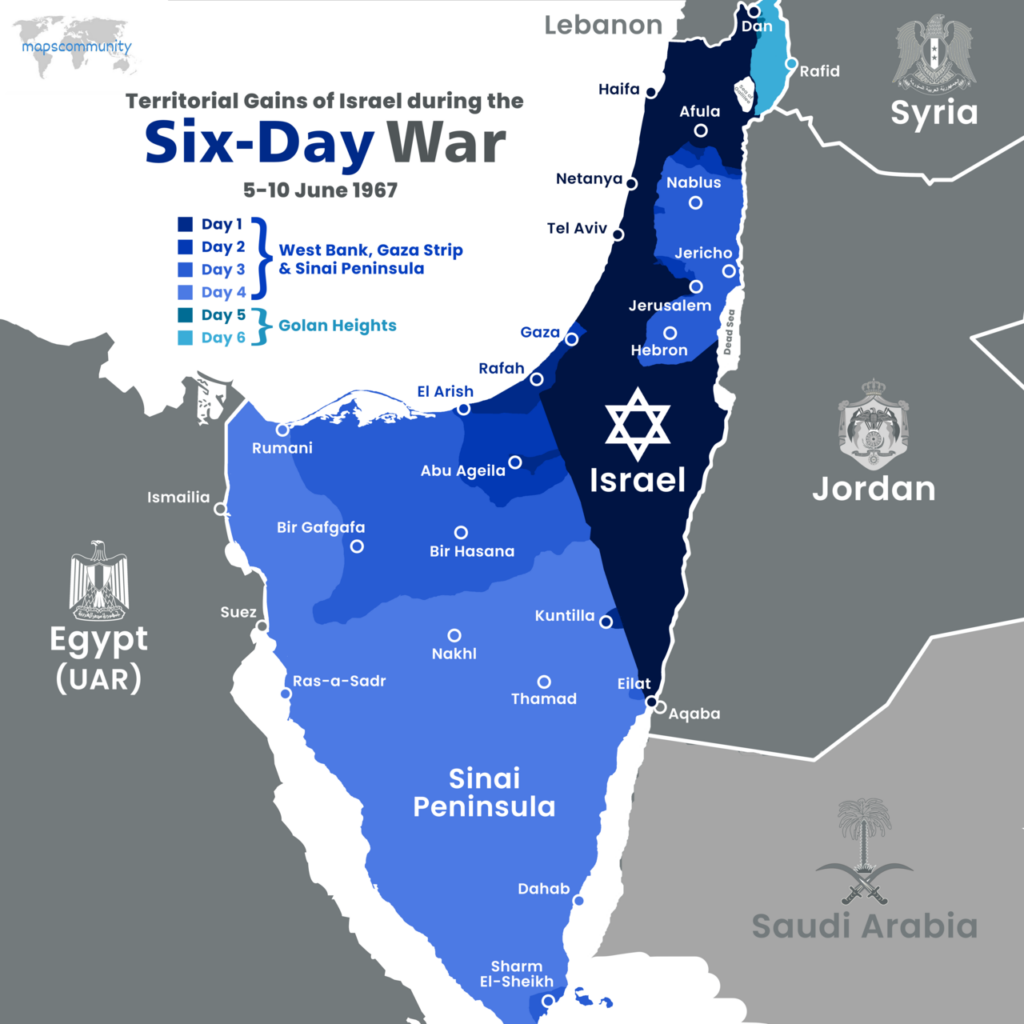
Israel captured the entire West Bank (the green area on the east side touching Jordan and the Dead Sea) and all of Gaza (the sliver on the West coast next to Egypt), as well as conquering all of Sinai and an area up north in Syria called the Golan Heights. | mapsontheweb.zoom-maps.com, Wikipedia
The Aftermath
The Six-Day War changed everything:
- Before the war, opposition to Israel was fuelled by secular Arab nationalists, notably Egypt’s president Gamal Abdel Nasser who promised to destroy Israel and create one large Arab state. The crushing defeat killed this movement.
- As Arab nationalism died, the main voice of the Palestinians became the Palestinian Liberation Organization or PLO, under Yasser Arafat.
- The defeat contributed to a religious revival in the Middle East. Decades of adopting Western ideas – nationalism, liberalism, socialism – had failed. Many said they should return to their roots and to Islam. Many young women donned hijabs their mothers had removed.
- Oppressive living conditions plus a religious revival led some to extremism. Islamic extremist groups gain traction after this date.
- All Palestinians now lived under Israeli control whether in the West Bank, Gaza or East Jerusalem.
- Since Israel controlled everything, some Israelis starting “settling” in Gaza, the West Bank and East Jerusalem, taking Palestinian land. Some did this to ensure Israel’s security believing Israel needed more land to protect itself. Others believed God gave Jews this land. The settlements have become a huge issue over time.
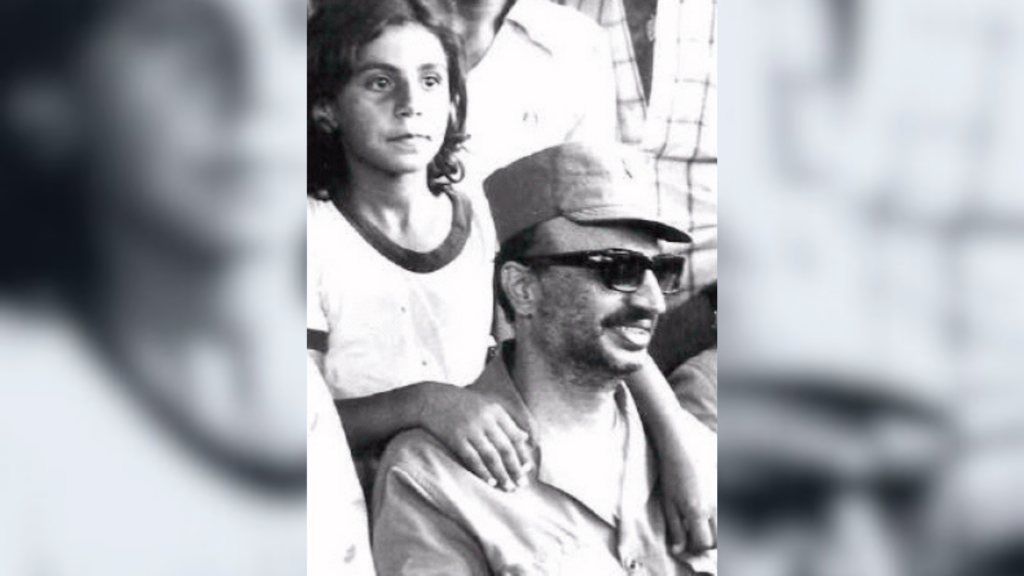
Yasser Arafat, leader of the PLO, became the voice of the Palestinian people. | By Hans Weingartz – Hans Weingartz/ Randi Crott: Auf nach Palästina!, CC BY-SA 3.0, https://commons.wikimedia.org/w/index.php?curid=3510525
Yom Kippur War and Peace with Egypt
In 1973, Egypt and Syria struck back and launched a war on Israel. Israel eventually won, but its initial losses made Israelis feel less secure. In response, Israel and Egypt signed a peace deal in 1979. Israel gave Sinai back to Egypt (see the map above), and Egypt became the first Arab nation to recognize Israel. The leaders, Menachem Begin and Anwar Sadat won the Nobel Peace Prize. Sadat was then assassinated for concluding the agreement.
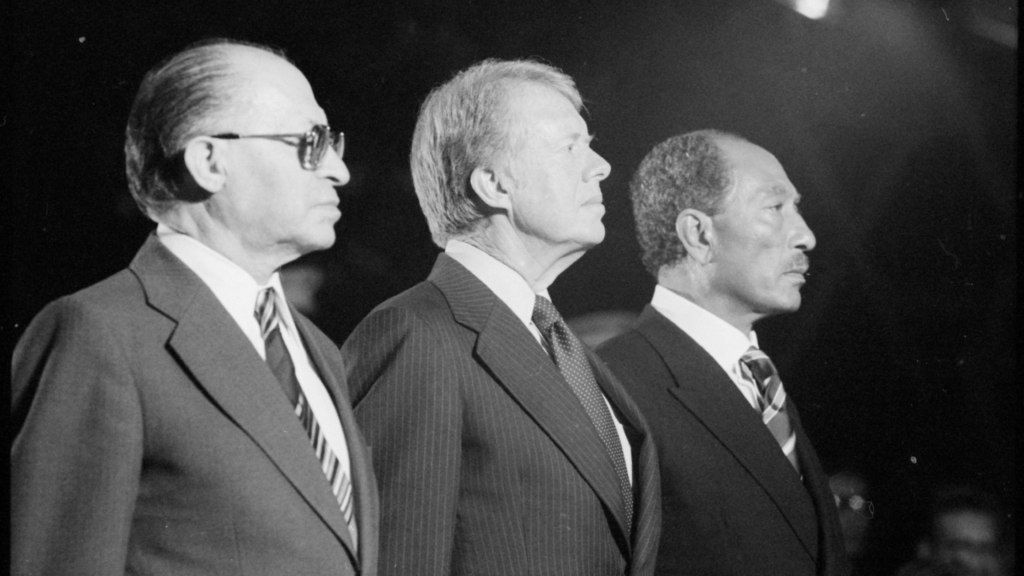
Egypt’s Anwar Sadat and Israel’s Menachem Begin signed a peace deal. The two leaders won a Nobel Peace Prize. Sadat was later assassinated for recognizing Israel | U.S. National Archives and Records Administration, en.wikipedia.org
First Intifada
Palestinians continued to live under Israeli occupation in Gaza, the West Bank and East Jerusalem. Finding this intolerable, in 1987, a grassroots revolt began among the Palestinians including boycotts, strikes, children throwing rocks at soldiers, and eventually Molotov cocktails and guns. The intifada lasted for six years and the site of soldiers sometimes firing on boys throwing stones was a public relations disaster for Israel. From this came hope.
Oslo – A Breakthrough
In 1993, Israel and the Palestinians signed a peace deal, the Oslo Accords. Israel recognized the PLO, allowed Yasser Arafat to return from exile to the West Bank, freed prisoners, and gave back some land. The PLO gained some governing rights in the West Bank and Gaza. The PLO recognized Israel’s right to exist. More difficult issues were put off, but it started a peace process and set a timeline to tackle bigger issues. Arafat and Israeli President Yitzhak Rabin won the Nobel Peace Prize. Later, Rabin was assassinated.
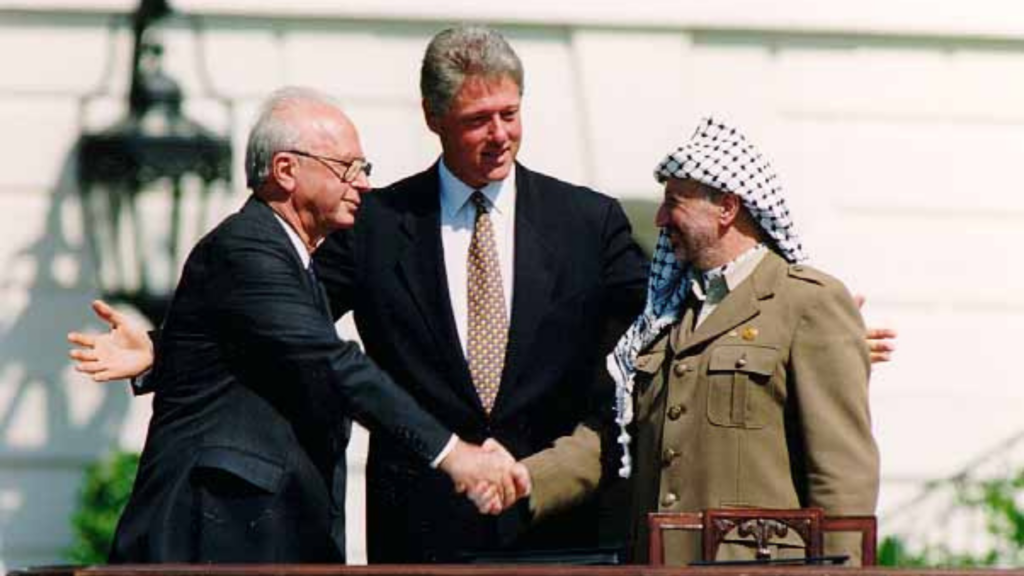
Yasser Arafat and Yitzhak Rabin conclude a peace agreement. Both were awarded the Nobel Prize. Rabin was assassinated by an Israeli extremist. | Vince Musi / The White House – gpo.gov, en.wikipedia.org
Undermining the Accords
Hardliners on both sides tried to undermine the accords. An Israeli extremist went to a mosque and killed 29 people while injuring over a hundred. Hamas, which opposed the process and denied Israel’s right to exist, set off suicide bombs with spectacular bloodshed and results. Finally, Rabin was assassinated by an Israeli extremist. Also, Israel kept establishing settlements (taking Palestinian land in Gaza, the West Bank, and East Jerusalem), some approved by the government while others were done illegally by families but then later recognized by Israel. It was unclear if peace would prevail.
The Failure at Camp David
By 2000, the peace process had dragged on for years. Timelines had not been met. There had been violence. Rabin was dead. But new Israeli prime minister Ehud Barak was committed to making a peace deal and so Bill Clinton brought him and Arafat together for one last attempt. But the two sides failed to agree. The Israelis and most of the Americans blamed Arafat. Others blamed the Israelis. The peace camp has never recovered.
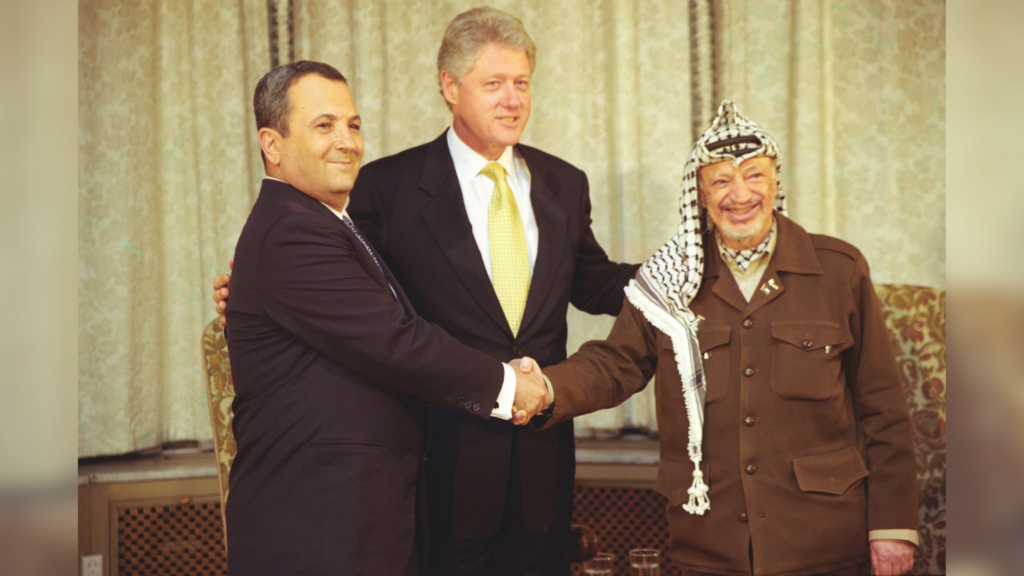
The failure at Camp David remains heartbreaking to this day. | White House Photograph Office (Clinton Administration), catalog.archives.gov/id/183374078 , en.wikipedia.org
Second Intifada
Immediately after the failure at Camp David, Ariel Sharon, Israel’s opposition leader, made a provocative trip to the Temple Mount, a disputed sacred area between the two communities, surrounded by 1000 police. It provoked a second intifada but this one was far more bloody and militaristic than the first one. A thousand Israelis and three thousand Palestinians died.
Many Israelis felt Barak had offered overly generous terms to Arafat and were shocked they were refused. This followed by the violence of the Intifada destroyed the Israeli left. It is now a weak force in Israeli politics.
The intifadas are bookends. The first intifada was less bloody but successful, pressuring Israel to propose a peace plan. That plan’s failure led to a second, more bloody intifada and the end of any meaningful attempts at peace.
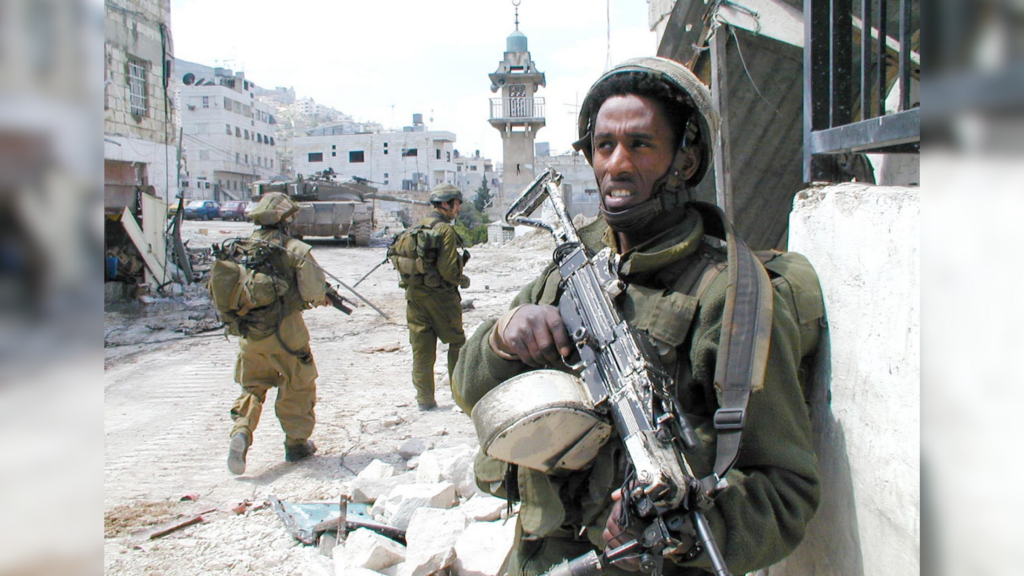
Aftermath of a suicide bombing of a bus. | By Israel Defense Forces – Standing Guard in Nablus, CC BY-SA 2.0, commons.wikimedia.org
Gaza Pull Out
Israeli Prime Minister Ariel Sharon pulled out of Gaza, feeling Israel had no interest in overseeing it. An election in 2006 brought Hamas to power. Israel does control the borders to Gaza, restricting the flow of goods and people in and out. Israel maintains control over the West Bank.
Today
Since the 2000 Camp David failure, Israel has been led by right-wing governments. The current government is the most right-wing in the nation’s history, leaving the country polarized and with crippling demonstrations this year. Israel has continued establishing settlements, now numbering about 130 settlements housing close to half a million Jews. These settlements divide Palestinian populations in the West Bank and make a Palestinian state less viable.
Gaza is ruled by Hamas. A poll weeks before October 7 showed most of Gaza’s people thought Hamas did nothing for them. Paradoxically, Israel Prime Minister Benjamin Netanyahu has always been seen to support Hamas because he likes that they, like him, oppose the peace process (Hamas denies Israel’s right to exist; Netanyahu wants to deny the Palestinians a state). He felt a strong Hamas kept Palestinians divided and showed that a two state solution was impossible. He felt he could control Hamas but this now looks foolish.
The Future
Honestly, no one has any idea. The road to peace has never looked less clear. That said, few anticipated the Soviet Union ending suddenly in 1989. But right now, one simply has to hope for peace and for different leaders to emerge.
(Part I of this series zooms out and looks at the conflict over a longer period.)


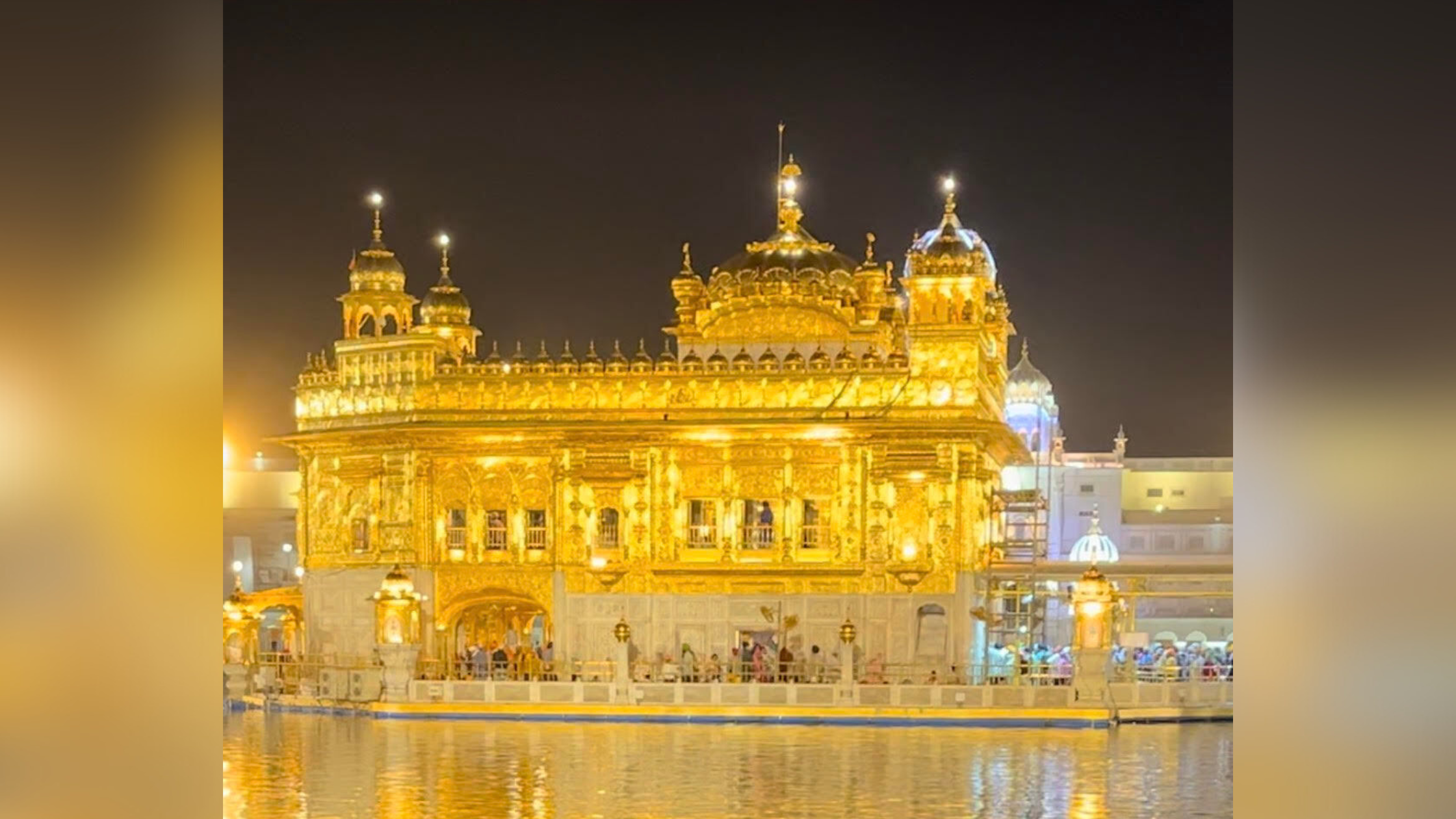
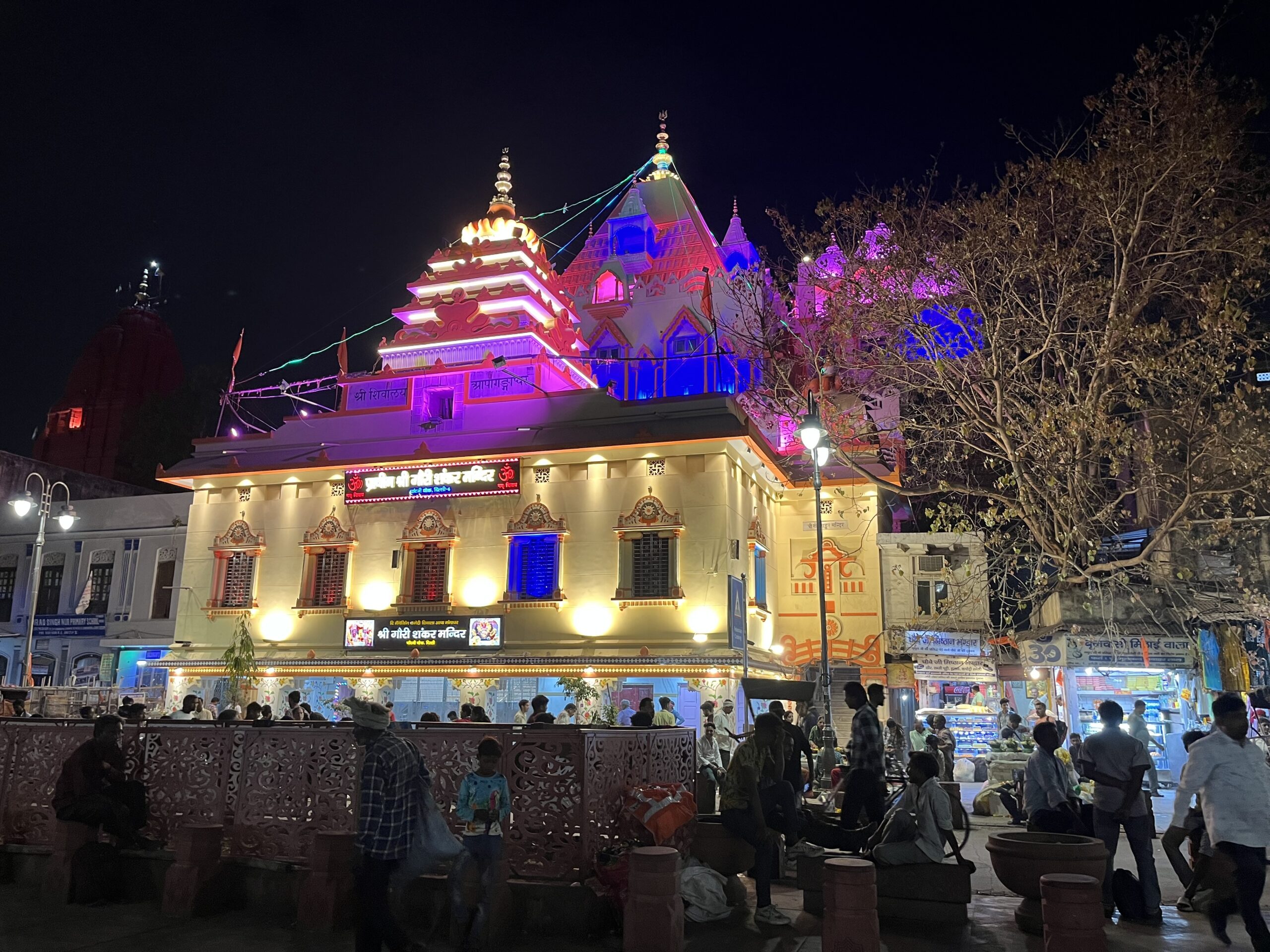

This blog and the previous blog certainly has clarified the timelines of all the various interactions between Israel/Palestine. Only now do I understand the ramifications of all these incursions and aggressions on each side. It is heartbreaking that politics seems to have trumped what could have been peace in this region
I’m glad this has helped a little. And it is certainly heartbreaking.
I sincerely appreciate your commitment to reporting in a manner that is cordial to the various factions. I simply do not have a personal point of reference to understand how hate continues to manifest itself in war in present day. Not just here but with the Russia and Ukrainian wars. I have been reluctant to listen to much media coverage- I feel overwhelmed and distrustful with mainstream “news”. I have read both your updates more than once. I feel drawn to hold all parties in loving kindness despite being completely mystified. It is an act of courage and compassion to even attempt to write on the topic in a respectful manner- I honour and acknowledge your work with regard to religious and cultural discourse. Thank you Brian.
Thanks so much Lana. This is very kind of you to say. I know we won’t get everything right but we hope to be of some benefit. It’s such a difficult issue for so many, none more so of course than those whose loved ones are directly impacted.
Both parts of your brief history have been excellent, Brian. Like everyone else, I don’t know what should be done. I look back at some historical factors like the actions of early twentieth century colonial powers, the absence of international interventions since that time and the effects of tribalism generally and I can see some of the sources of the problem. however, can we find answers for today if we know the history better? I don’t know. Modern liberal democracies since the American Revolution have been designed to mitigate against tribalism but I don’t see genuine liberal democratic principles being applied through institutions here. Acceptance of alternative methods and processes, goals and values are needed to achieve peace but this cannot be achieved without painful sacrifices and hard concessions. What is each side willing to give up to achieve peace? Again, I don’t know.
Thank you Brian for educating and enlightening us in a politically neutral manner. One suggestion, a third blog could explain terms such as intifada, occupied territories etc. Thanks again. May peace be with you.
Kathryn
Thanks for your comment! And also for the suggestion. I will try to be more precise with my terms.